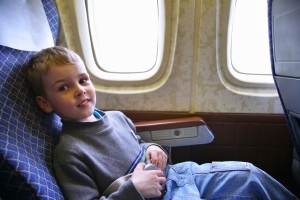 (BPT) – From bag-checking charges and unexplained delays to rude fellow passengers and flight attendants who are having a bad day, flying can be a huge hassle. If you’re among the approximately 1 to 1.5 percent of Americans living with a peanut or tree nut allergy, boarding a commercial airplane can raise concerns that you might experience a rare in-flight reaction.
(BPT) – From bag-checking charges and unexplained delays to rude fellow passengers and flight attendants who are having a bad day, flying can be a huge hassle. If you’re among the approximately 1 to 1.5 percent of Americans living with a peanut or tree nut allergy, boarding a commercial airplane can raise concerns that you might experience a rare in-flight reaction.
Coping with a peanut or tree nut allergy, however, doesn’t mean you – or your peanut- or tree nut-allergic child – have to forego the convenience of air travel. You can take steps to minimize your risk of having an allergic reaction while flying – and at least one study indicates that being proactive can make a positive difference in your travel experience.
The international study, published in the Journal of Allergy and Clinical Immunology-In Practice, found that peanut and nut-allergic travelers who took certain actions lessened their odds of a reported in-flight allergic reaction. The study’s lead author, allergist and pediatrician Dr. Matthew Greenhawt of the University of Michigan’s Food Allergy Center and C.S. Mott Children’s Hospital, is also a medical advisor to Kids With Food Allergies, a division of the Asthma and Allergy Foundation of America.
Peanut and tree nut allergic travelers can take steps to minimize the risk of a rare reaction while flying. The steps include:
- Visit the website of the air carrier and read about their policies for travelers with allergies. If you don’t see what you’re looking for on the website, contact the airline directly.
- Speak up. Well before you fly, inform the airline of your peanut allergy. Keep in mind that asking for accommodations was one of the eight steps the study found that helped travelers reduce their risks of having an allergic reaction while flying. Requesting a peanut- or tree-nut free buffer zone (such as no peanuts three rows before and behind yours) and asking that other passengers not eat peanut- or tree-nut containing products were also important steps, researchers found. If you are experience a reaction, notify the crew and seek their assistance to help with treatment.-
- Carry a written emergency plan with you on your flight so that others will know what to do to help you in case a reaction occurs. Always travel with a fresh supply of epinephrine auto-injectors and keep them with you at all times. They should be kept in your carry-on and stored beneath the seat, in the overhead bin (less preferable because it’s more difficult to access) or in the pocket of the seat back in front of you. Keep the medicine in its original packaging with the prescription label to help security officers quickly recognize it. If you forget to bring your dose on board, immediately notify the crew so they can check the on-board medical kit, which contains epinephrine, as a failsafe if a reaction did occur.
- Consider wearing medical identification jewelry. These life-saving tags could help alert others to what’s wrong if you do suffer an allergic reaction.
- When you get to your seat, use an antibacterial wipe to clean all surfaces you may touch, including the seat, arms and the tray table in front of you. This was another helpful action noted in the study. Some families also bring a sheet or blanket for a peanut- or tree-nut allergic child to sit on so he or she doesn’t come in contact with any allergens that prior passengers may have left behind.
- Dine safely on food you’ve brought yourself. Though obvious, this is a big difference-maker. On most airlines you can request a peanut/tree nut-free meal, but eating your own food can also provide peace of mind. The study found this was one of the risk-reduction steps travelers found effective. Bringing your own food ensures you know exactly what is – and isn’t – present in what you’re eating.
- Don’t use airline pillows or blankets. This was yet another risk-reducing measure that the study noted which helped travelers reduce their risks of having an allergic reaction while flying. If you need these items for your flight, bring your own, so you can be sure to avoid allergens that may linger on airline-provided products.
“People with peanut or tree nut allergy can continue to fly and be empowered by these suggestions for ways they can potentially reduce their in-flight risk of a reaction,” Greenhawt says. “Again, data from this study has shown that the risk of reaction appears to be very small. For those who have not flown because of a peanut or tree nut allergy, we encourage you to consider doing so, as we hope these steps will reduce your anxiety and empower you to take that trip you have always wanted to.”
For more tips for traveling with food allergies, visit www.kidswithfoodallergies.org or www.aafa.org.






